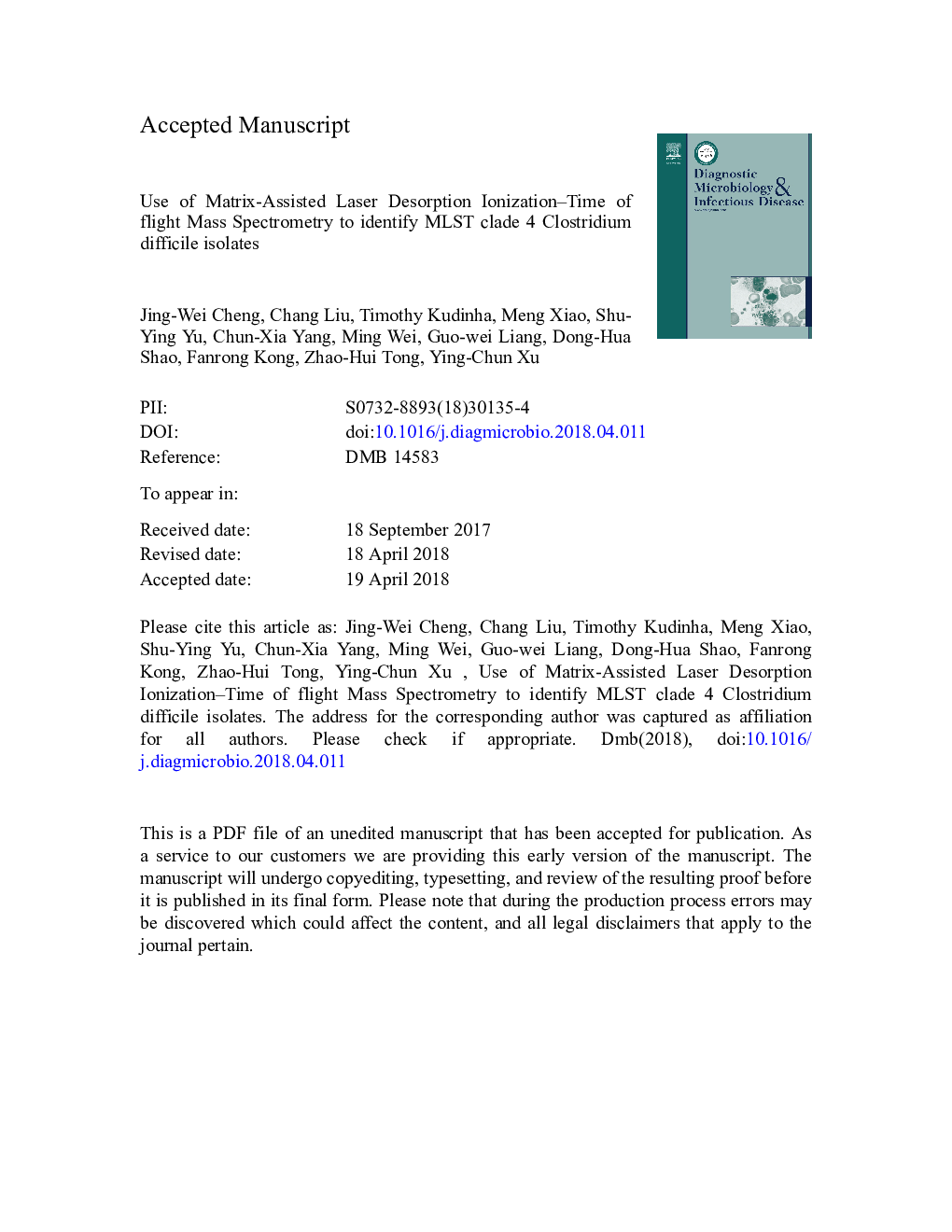| Article ID | Journal | Published Year | Pages | File Type |
|---|---|---|---|---|
| 8737165 | Diagnostic Microbiology and Infectious Disease | 2018 | 24 Pages |
Abstract
Clostridium difficile is the leading cause of health care-associated infections. Previous studies suggest that C. difficile MLST clade 4 strains with higher drug resistance rates constitute the major clone spreading in China. Thus development of a rapid and accurate typing method for these strains is needed to monitor the epidemiology of this clone and to guide clinical treatment. A total of 160 non-duplicate C. difficile isolates recovered from three large teaching hospitals in Beijing were studied. All the 41 clade 4 C. difficile isolates clustered together on the PCA dendrogram. Spectra peak statistics revealed that five markers (2691.43Da, 2704.91Da, 2711.93Da, 3247.27Da and 3290.76Da) can easily and reliably distinguish between clade 4 and non-clade 4 isolates, with area under the curve (AUC) values of 0.991, 0.997, 0.973, 1 and 1, respectively. In conclusion, MALDI-TOF MS is a very simple and accurate method for identifying C. difficile MLST clade 4 strains.
Related Topics
Life Sciences
Immunology and Microbiology
Applied Microbiology and Biotechnology
Authors
Jing-Wei Cheng, Chang Liu, Timothy Kudinha, Meng Xiao, Shu-Ying Yu, Chun-Xia Yang, Ming Wei, Guo-Wei Liang, Dong-Hua Shao, Fanrong Kong, Zhao-Hui Tong, Ying-Chun Xu,
